Bwlch Glas Lead Mine |
||
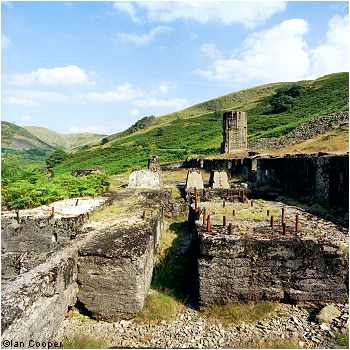 Initial investigations at Bwlch Glas started during the 1880's when a level was excavated to intercept two parallel veins of ore, which outcropped further up the hill. Serious production at the mine didn't start until 1909, when an impressive processing mill was constructed and other levels opened. The Scottish Cardigan Lead Mining Company Ltd. finally closed the mine in 1923, having worked there on a fairly intermittent basis for a number of years.
Climbing up the hillside from the road are the remains of the processing mill. As Bwlch Glas was a relatively late venture the building remains and foundations comprise of harsh concrete, rather than the crumbling masonry structures found elsewhere. The deep adit, level with the road, still drains water from the mine workings, but has collapsed not far from the entrance preventing further exploration.
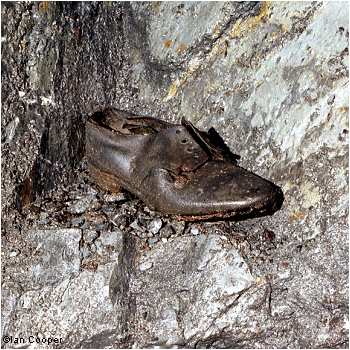 Entering the mine through No. 1 Adit it's possible to find the two veins, both now flooded up to adit level. By negotiating original mine ladders and free hanging abseils it's possible to move down through the workings to the level of the lower adit. The floor of the stope in this area is strewn with rotten timberwork that's fallen from above, but the most impressive artefact is the underground headgear and cages that were used to access the now flooded lower levels. A small diesel winch located on a concrete plinth was used to haul the cages in the shaft. The winch was removed when the mine closed, the cable being cut and allowed to hang free from the wheels at the top of the headgear.
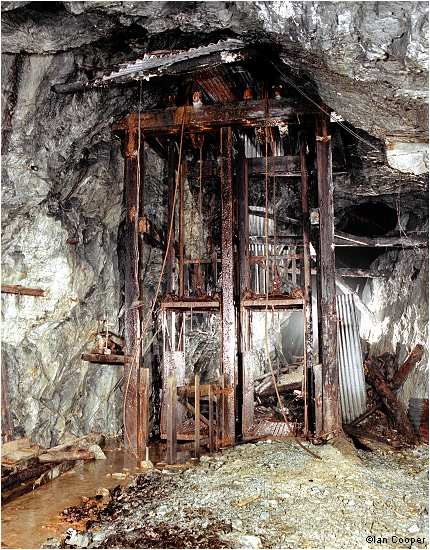 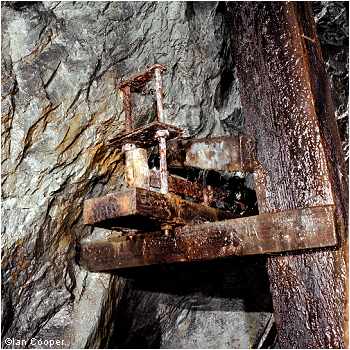 Positioned on the left hand side of the headgear, on a small shelf, are the remains of the signalling bell. This was used to indicate when the cages were ready to be raised and lowered.
Not far from the headgear, amongst collapsed stemples and rotten timber, is a well preserved wooden wheel barrow (minus it's wheel). Also in this area is an abandoned shoe and selection of rotten mining ladders.
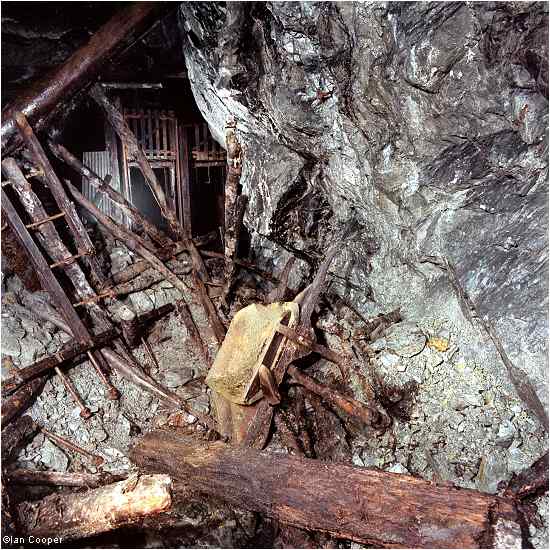 |
||
| All photographs are the work and copyright of Ian Cooper. | ||
